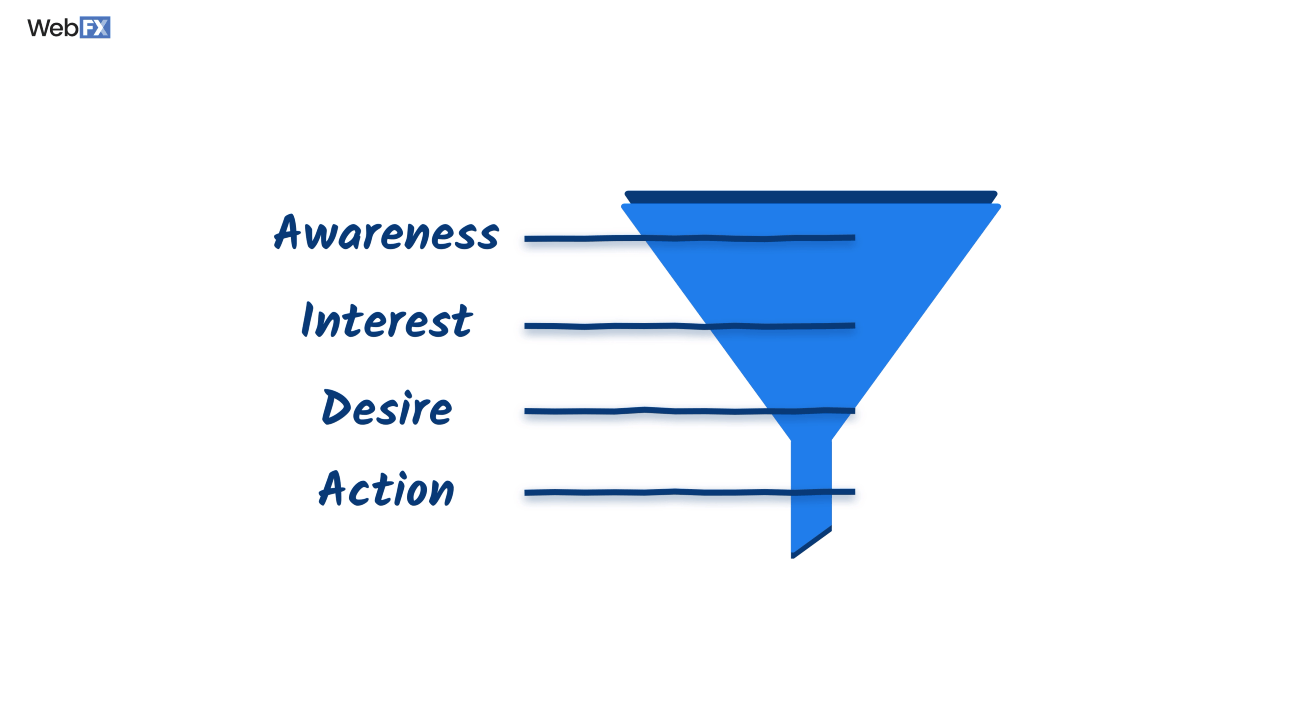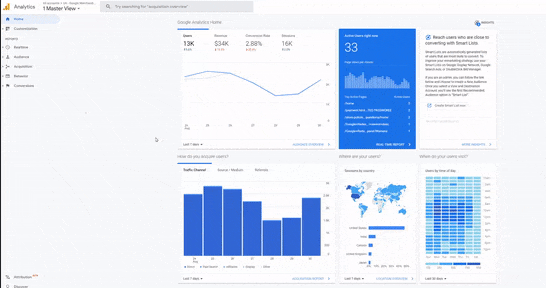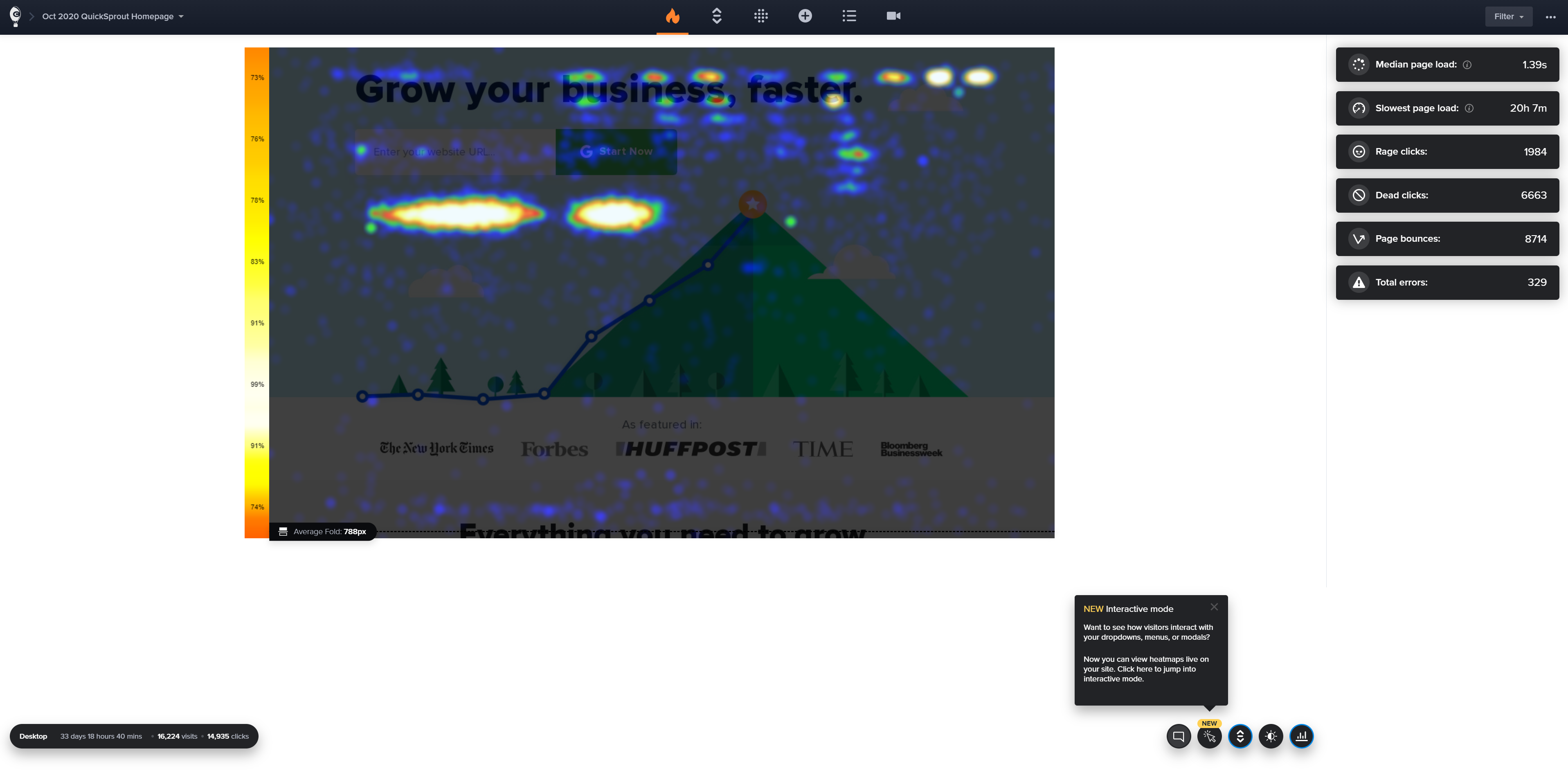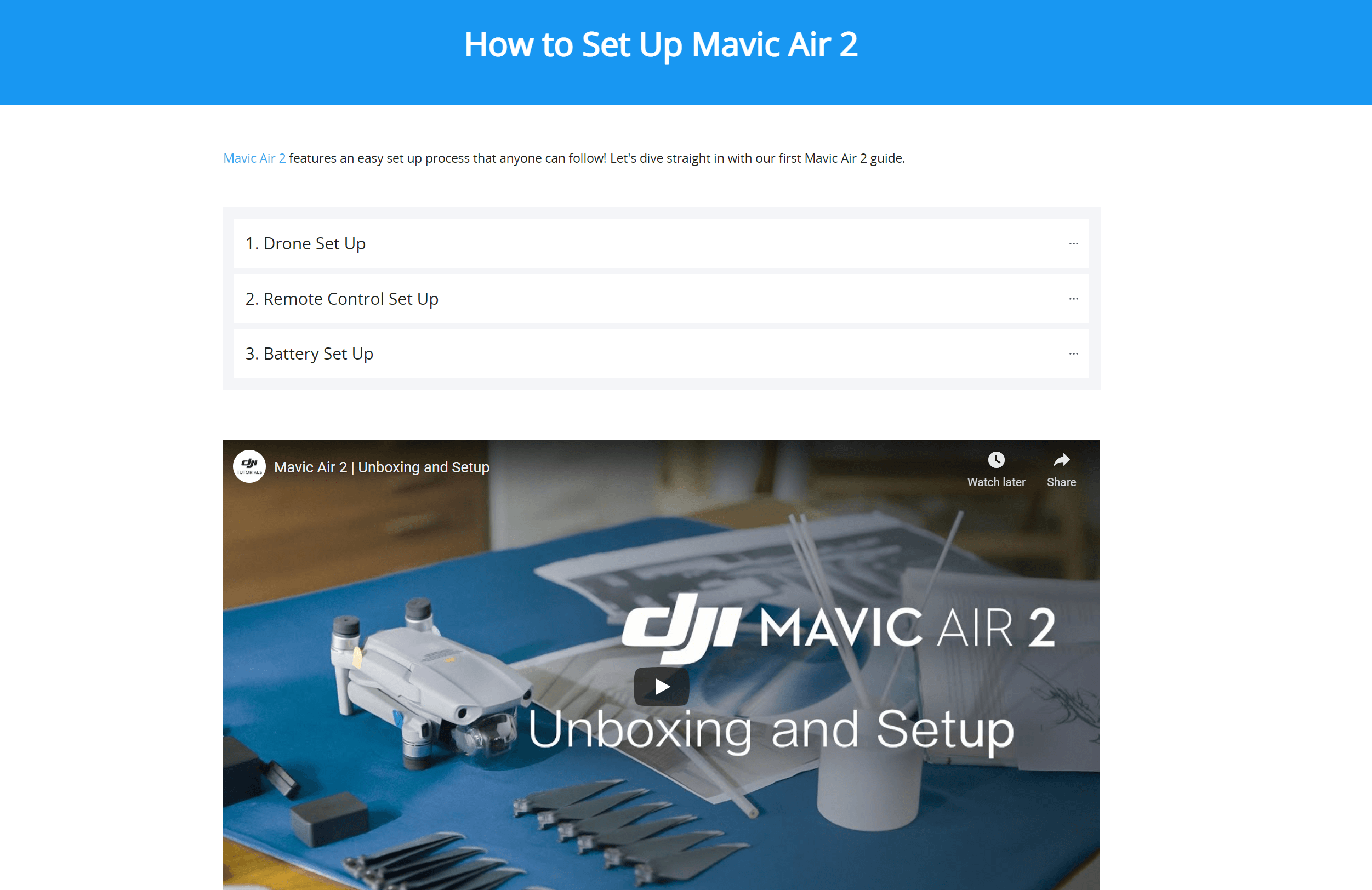What are the Sales Funnel Stages? Fix the Holes in Your Funnel!
Jackie from the WebFX Internet Marketing team has the details on the different sales funnel stages and how you can stop people from skipping out on your funnel.
Transcript:
Not every person finds a business online and instantly becomes a customer, so how do you turn curious searchers into raving fans of your business?
It really comes down to how you optimize your website for the different sales funnel stages.
What is the sales funnel?
The sales funnel outlines the steps customers take from when they first interact with your business to when they make a purchase.
People assume customer journeys are a strict progression from awareness (when they discover your business) to purchase. But actually, to paraphrase from Doctor Who, it’s more like a big ball of wibbly-wobbly, timey-wimey stuff.
The traditional sales funnel organizes the customer journey into an inverted pyramid with the most prospective customers at the top and fewer at the bottom.

The sales funnel stages in this model go from awareness to interest to desire to action.
At the top of the funnel, in the awareness stage, people become familiar with your business.
If they move down to the interest stage, they may be thinking about investing in your product or service.
Closer to the bottom we have desire, in which someone wants- what you offer.
And most importantly, at the very bottom, we have the action stage, meaning someone contacts you or makes a purchase.
Don’t get me wrong. While buying habits may have changed, people still go through these “traditional” phases.
But with so many options online and so many ways to engage with a business, customer journeys can’t be boiled down to one linear path anymore.
You can even break these marketing funnel stages into smaller phases like engagement, education, justification, etc.
The complex customer journey means that optimizing your funnel isn’t as straightforward as it used to be.
Nonetheless, I have some tips to help you capture more leads and sales for your business.
Losing sales?
Not happy with revenue?
It could be a hole in your marketing funnel.
Fix Your Marketing Funnel
3 sales funnel optimization strategies
1. Identify holes in your funnel
Figuring out where people are dropping off in their customer journeys is NOT the easiest thing to do.
Look into whatever analytics tools you use to not only look at your top-performing pages but your worst-performing pages, too.
If you’re using a tool like Google Analytics, you can track specific events and conversions on your website. You can look at metrics like bounce rate and exit rate to see what pages are keeping users from moving to the next step.

This information is super important for understanding where people are stopping through your funnel.
To understand the “why” from there, you can pair that quantitative data with qualitative data like video recordings or heatmaps in Crazy Egg or Hotjar – to get a deeper understanding of what pages turn people away.

Take a look at your competitors, too. What are they offering to get users to the next step? A big factor in getting people to convert is content marketing. What types of content are your competitors making that you’re not?
2. Run A/B tests on your website
Once you have all of that data from identifying your marketing funnel gaps, test, test, test.
If you saw that people were reading your content but not subscribing to your newsletter, you might need to change your call to action, rearrange the page elements, or adjust some designs.
Did your top-performing pages have any elements in common? Maybe you can bring whatever elements work on those top pages to your lower-performing pages.
Just be sure you only test one element at a time. Updating too many things at once can make it harder to understand which change actually made a difference.
And don’t get discouraged if your test doesn’t get you the results you wanted.
In fact, according to Appsumo, only one out of every eight A/B tests is successful. We test to see what works, so even a disappointing result can tell you a lot about your strategy.
3. Create content that addresses customer needs
Content marketing is a big deal. Through blog posts, guides, infographics, videos, and more, you can 1. meet your customers’ needs no matter where they are in your marketing funnel, 2. save your sales people some time answering questions, and 3. build trust with your audience.
I know I said people don’t exactly follow the traditional sales funnel stages anymore, but they still need content to guide them along in each part of their journeys.
It’s easiest if you break the sales funnel into top of funnel, middle of funnel, and bottom of funnel.
Top-of-the-funnel content
People at the top of the funnel aren’t exactly ready to make a purchase. In fact, some of them may not ever make a purchase from your business. At this funnel stage, people are looking for some general information. They’re not really in the mood for a sales pitch. Yet.
Focusing on educational content is a great way to engage top-of-funnel users. Things like tutorial videos, blog posts, and infographics are great for this stage of the sales funnel.
So let’s say you run a catering business. Some top-of-funnel content ideas might be a blog post covering the most common meals at weddings… or a video of you making one of your signature dishes. Get creative and make it educational and engaging.
Middle-of-the-funnel content
In the middle of the funnel, people know what they need, but are considering their options. You can still use educational content, but the topics may shift a bit to helping people make decisions. A blog post about how to choose a catering company or a calculator for the cost of catering would be good at this stage. Here, focus on creating value for your prospects.
Bottom-of-the-funnel content
The bottom of the funnel is where you make the final push to turn people into customers. They’re ready to purchase, so what can you do to get them over that line?
Testimonials from satisfied customers are great for showing off how your business positively impacts people.
Even emails with discounts or special offers can help seal the deal. Here, focus on your unique selling points as a company, and push them forward.
Don’t forget about customer retention. If you sell products…tutorials and product demos can help people get more comfortable and familiar with whatever they bought.

If you’re that catering company, write about what people can do with their extra food. Don’t stop communicating with people just because they’ve made one purchase.
When you’re looking for content ideas, think about your current and past customers. You can probably make a list of common questions you’ve heard over the years. That’s a great place to start. You can even ask customers what questions they have if you’re looking for ideas.
You can use forums like Reddit or Quora to see what people are talking about, too. Even Google Trends can help.
The content you create will be a valuable resource, and if you optimize it for search engines — which we cover in several other videos on this channel — you can reach more people over time.
To keep learning about converting leads to customers, subscribe to our channel. For even more digital marketing advice, sign up for Revenue Weekly, our email newsletter, using the link in the video description.
Happy optimizing!